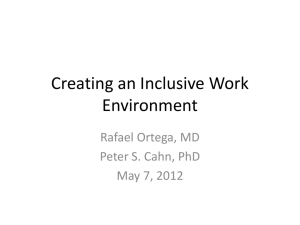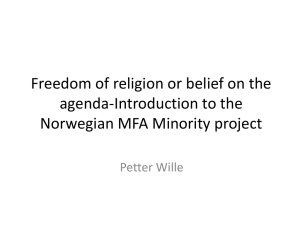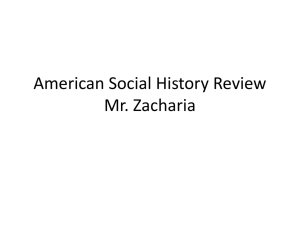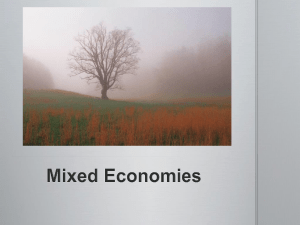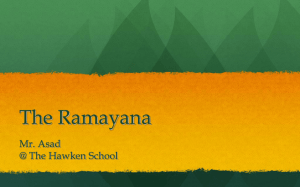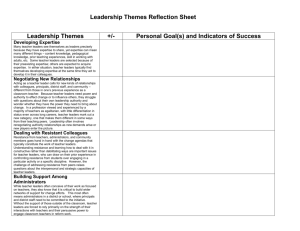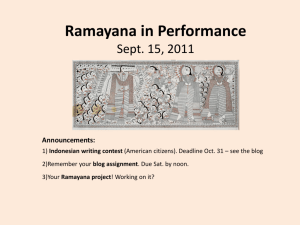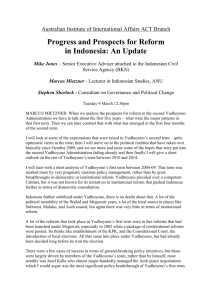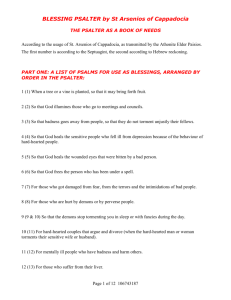Rakesh Rajani`s - The OGP Civil Society Hub
advertisement
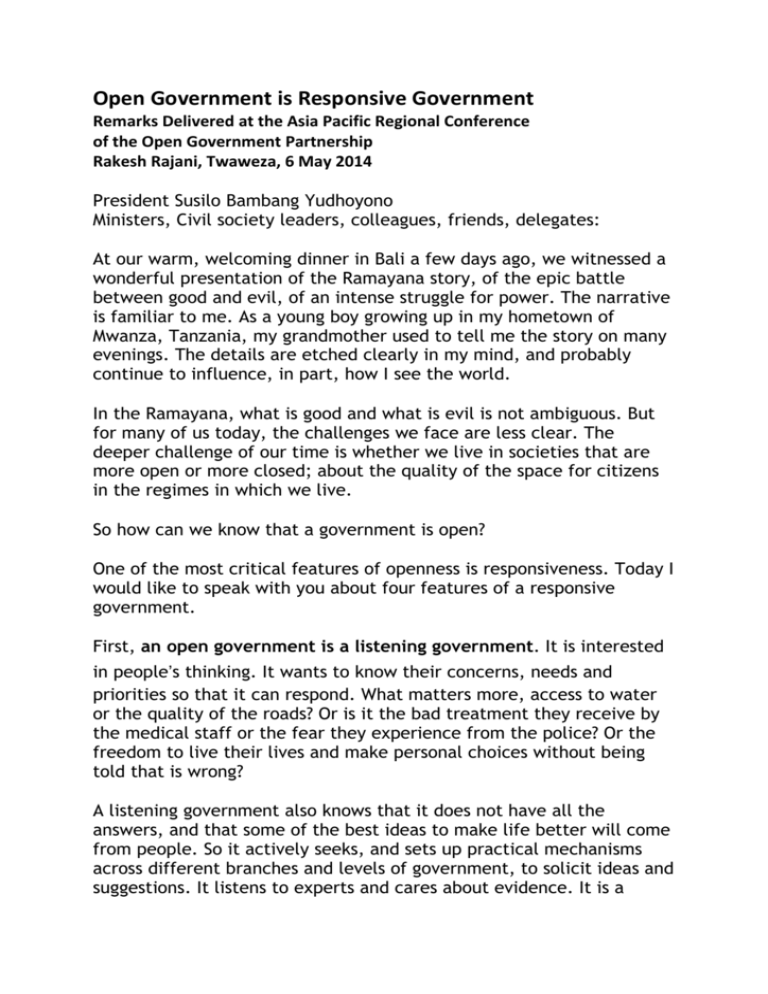
Open Government is Responsive Government Remarks Delivered at the Asia Pacific Regional Conference of the Open Government Partnership Rakesh Rajani, Twaweza, 6 May 2014 President Susilo Bambang Yudhoyono Ministers, Civil society leaders, colleagues, friends, delegates: At our warm, welcoming dinner in Bali a few days ago, we witnessed a wonderful presentation of the Ramayana story, of the epic battle between good and evil, of an intense struggle for power. The narrative is familiar to me. As a young boy growing up in my hometown of Mwanza, Tanzania, my grandmother used to tell me the story on many evenings. The details are etched clearly in my mind, and probably continue to influence, in part, how I see the world. In the Ramayana, what is good and what is evil is not ambiguous. But for many of us today, the challenges we face are less clear. The deeper challenge of our time is whether we live in societies that are more open or more closed; about the quality of the space for citizens in the regimes in which we live. So how can we know that a government is open? One of the most critical features of openness is responsiveness. Today I would like to speak with you about four features of a responsive government. First, an open government is a listening government. It is interested in people’s thinking. It wants to know their concerns, needs and priorities so that it can respond. What matters more, access to water or the quality of the roads? Or is it the bad treatment they receive by the medical staff or the fear they experience from the police? Or the freedom to live their lives and make personal choices without being told that is wrong? A listening government also knows that it does not have all the answers, and that some of the best ideas to make life better will come from people. So it actively seeks, and sets up practical mechanisms across different branches and levels of government, to solicit ideas and suggestions. It listens to experts and cares about evidence. It is a telling, and unusual, testament of the leadership in this country that President Yudhoyono has personally promoted the work of the Joint Poverty Action Lab (JPAL) so as to foster evidence based policy making. In addition to informed experts, a listening government asks for ideas from ordinary people and civil society. Imagine, for a moment, the power of that. For an old fisherman or bus driver or cook or teacher – who has been used to the government telling him or her what to do and not do – who is a little scared of government – to now experience government as truly interested in what he thinks or the suggestions she has to solve problems. Imagine what it does for the relationship between the state and the people, about what it does to public trust. We take inspiration from how Minister Kuntoro, the head of the Presidential Delivery Unit here in Indonesia, dealt with the daunting humanitarian crisis in the Aceh disaster by establishing a transparent platform and sharing information openly on who is doing what where. These experiences have informed the development of Lapor, a platform for continuous citizen feedback. And I note that on social media, President Yudhoyono takes input from 5 million twitter users and over 2.5 million Facebook friends. Second, an open government informs and educates. It understands that it needs to explain to the public what is going on in the country, what the government is doing and the basis of its policy and budget choices. It explains the nature of trade-offs, such as why some services are free and others are not, or why certain hard decisions must be made, and subjects those decisions to public scrutiny by inviting public debate on those choices. An open government makes polices and data open. In the United States the Obama administration has opened up over 200,000 federal data sets to every person with online access. In the UK, the government is exercising similar leadership, in partnership with the Omidyar Network, My Society and others. Standards are being developed to make these meaningful, such as disaggregating data to a level that makes sense for local citizen services, and requiring it to be machine readable, so that users can mash and analyze the data. An open government also opens up budgets, by making budget documents and data open, on both budget plans and execution, and the reports of the national audit office. The Open Budget Index (OBI), which ranks countries by budget openness, shows how despite governance challenges, countries such as New Zealand and South Africa are world leaders in budget transparency. That said, an open government realizes that there is not a straight line between policy and implementation, between the letters of the law and how they are translated by officials, between orders of a president and the reality on the ground. For this reason, an open government is particularly interested in monitoring practice. In India, for instance, Nikhil Dey of the civil society group MKSS and his colleagues have invented a practice of painting public budgets on village walls, so that people can know what the plans say and follow up how they match with reality. Using the country’s Right to Information law, through social audits that involve ordinary people, across thousands of communities, they have shown how registers are full of ghost workers and fabricated buildings. By doing so they put public officials on notice to be accountable to the people they are meant to serve. Third, an open government engages with citizens. It doesn’t just say give us your ideas and then trust us and leave us alone. Rather it involves people in the process of governance. It co-governs. In relation to the MKSS work in India, the response from government has been mixed. There has been a lot of resistance and intimidation. But not everywhere. Some states have embraced the approach and adapted the practice in their governments. Similarly, the civil society organization the Concerned Citizens of Abra for Good Government (CCAGG) in the Philippines is engaged in monitoring and auditing public infrastructure projects. From the start CCAGG has adopted an approach of constructive engagement, and at times critical collaboration, toward government. It has worked with many parts of central and local government. At first, government engineers belittled CCAGG reports because not all monitors were engineers. Bot over time and with persistence, they changed their mind. The impact of CCAGG‘s monitoring work can now be seen in policy changes relating to procurement and audits. These ideas are spreading across the world as hundreds of CSOs and some governments use this experience to fashion social audits of their own. There are many other forms of engagement. The UK, for instance, has developed the concept of 'open policy making', seeking to create an innovative process involving government and civil society to craft the main norms and rules that regulate society. Or Mexico, where a tripartite group consisting of the executive, the Freedom of Information Commission, and civil society collaborate together to coshape the country's open government plan. Collaboration means mutual respect but not co-optation; even as they seek to listen and reach consensus, each side maintains its independence and values. Fourth, an open government protects. It protects all people, but it particularly protects those who have little power. Here I have three groups in mind. The first group involves people who are historically disadvantaged. Women make up half the population, but they do not enjoy equal security, voice, access, pay or power. In many of our societies children and young people make up more than half the population, but that balance is not reflected in decision making and public safety. An open government makes sure that these 'silenced' majorities are heard and have a fair chance in life. The second group, that is especially important in a democracy, is minorities. An open government works hard to listen to majorities, but it works even harder to listen to and protect the rights of minorities. These include religious and ethnic minorities, such as the Rohingya in Myanmar. It includes people with disabilities. It also includes people with different life preferences, such as people who love others of the same sex. The third group includes people who are critics of government. This is especially hard, particularly when the critics are being harsh or unreasonable or causing unease in society. But the true test of an open government is not only to do the things that we all like, but to protect the space for dissent. To celebrate whistleblowers who expose corruption and journalists who tell the truth. A real leader signals to colleagues in authority that it is important to welcome different and critical ideas, because that is how innovation happens, change happens, growth happens, and how public trust is built over time. In conclusion, then, an open government is a learning government. It takes risks. It tries out different things. It learns and changes; it is better and more effective today than it was yesterday. So every member of OGP, every government, and every government leader needs to be able answer the questions: What have you learned? What do you realize you were wrong about? What do you know now that you did not know before? What will you change and do differently as a result? And at all times remember that the most important metric is how what we are doing is improving people's lives. To achieve this there are no easy answers. There are no blueprints. It will take humility and curiosity and courage. But with these three qualities, we can move forward. Thank you.
